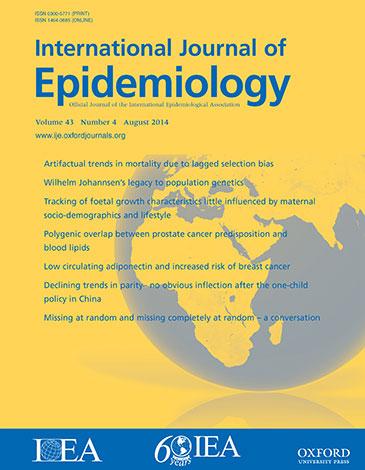How COVID-19 affected academic publishing: a 3-year study of 17 million research papers
IF 5.9
2区 医学
Q1 PUBLIC, ENVIRONMENTAL & OCCUPATIONAL HEALTH
引用次数: 0
Abstract
Background The COVID-19 pandemic induced an unprecedented response from the scientific research community. Previous studies have described disruption of the norms of academic publishing during this time. This study uses an epidemiological statistical toolkit alongside machine-learning methods to investigate the functioning of the scientific information-generation and -consumption ecosystem throughout the pandemic. Methods A dataset of 17 million scientific research papers that were published between January 2019 and December 2022 was analysed. Data on citations and Altmetrics were harvested, and topic modelling was applied to abstracts. COVID-19-related articles were identified from title text. We investigated publication dynamics, correlations between citation metrics and Altmetrics, rates of publication in preprints, and temporal trends in topics, and compared these metrics in COVID-19 papers vs non-COVID-19 papers. Results Throughout 2020–2, 3.7% of English-language research output was on the topic of COVID-19. Journal articles on COVID-19 were published at a consistent rate during this period, while preprints peaked in early 2020 and decreased thereafter. COVID-19 preprints had lower publication rates in the peer-reviewed literature than other preprints, particularly those that were preprinted during early 2020. COVID-19 research received significantly more media and social media attention than non-COVID-19 research, and preprints received more attention, on average, than journal articles, with attention peaking during the initial wave and subsequent peaks corresponding to the emergence of novel variants. COVID-19 articles exhibited a higher correlation between Altmetrics and citation metrics compared with non-COVID-19 publications, suggesting a strong alignment between scientific and public attention. Conclusion This study provides a comprehensive description of the rapid expansion of COVID-19 research, revealing evolving research areas and waxing and waning public interest across different topics. Preprints played an important role in disseminating scientific findings, but the level of coverage of preprinted findings emphasizes the need for guidelines in handling preprint research in media, particularly during a pandemic.新冠肺炎如何影响学术出版:一项为期3年、涵盖1700万篇研究论文的研究
新冠肺炎大流行引起了科学界前所未有的反应。先前的研究已经描述了在此期间学术出版规范的破坏。本研究使用流行病学统计工具包和机器学习方法来调查整个大流行期间科学信息生成和消费生态系统的功能。方法对2019年1月至2022年12月发表的1700万篇科研论文数据集进行分析。收集引文和Altmetrics数据,并将主题建模应用于摘要。从标题文本中识别出与covid -19相关的文章。我们调查了发表动态、引文指标与Altmetrics之间的相关性、预印本发表率和主题的时间趋势,并比较了COVID-19论文与非COVID-19论文的这些指标。结果2020 - 2020年,以COVID-19为主题的英语研究产出占3.7%。在此期间,关于COVID-19的期刊文章的发表速度保持一致,而预印本在2020年初达到峰值,此后下降。2019冠状病毒病预印本在同行评议文献中的发表率低于其他预印本,特别是在2020年初预印本。COVID-19研究比非COVID-19研究获得了更多的媒体和社交媒体关注,预印本平均比期刊文章获得了更多的关注,关注度在初始波期间达到峰值,随后的峰值与新变体的出现相对应。与非COVID-19出版物相比,Altmetrics和引文指标之间的相关性更高,这表明科学和公众关注之间存在很强的一致性。本研究全面描述了COVID-19研究的快速扩张,揭示了不同主题的研究领域的演变以及公众兴趣的兴衰。预印本在传播科学发现方面发挥了重要作用,但预印本研究结果的报道程度突出表明,在处理媒体预印本研究方面,特别是在大流行期间,需要制定准则。
本文章由计算机程序翻译,如有差异,请以英文原文为准。
求助全文
约1分钟内获得全文
求助全文
来源期刊

International journal of epidemiology
医学-公共卫生、环境卫生与职业卫生
CiteScore
13.60
自引率
2.60%
发文量
226
审稿时长
3 months
期刊介绍:
The International Journal of Epidemiology is a vital resource for individuals seeking to stay updated on the latest advancements and emerging trends in the field of epidemiology worldwide.
The journal fosters communication among researchers, educators, and practitioners involved in the study, teaching, and application of epidemiology pertaining to both communicable and non-communicable diseases. It also includes research on health services and medical care.
Furthermore, the journal presents new methodologies in epidemiology and statistics, catering to professionals working in social and preventive medicine. Published six times a year, the International Journal of Epidemiology provides a comprehensive platform for the analysis of data.
Overall, this journal is an indispensable tool for staying informed and connected within the dynamic realm of epidemiology.
 求助内容:
求助内容: 应助结果提醒方式:
应助结果提醒方式:


